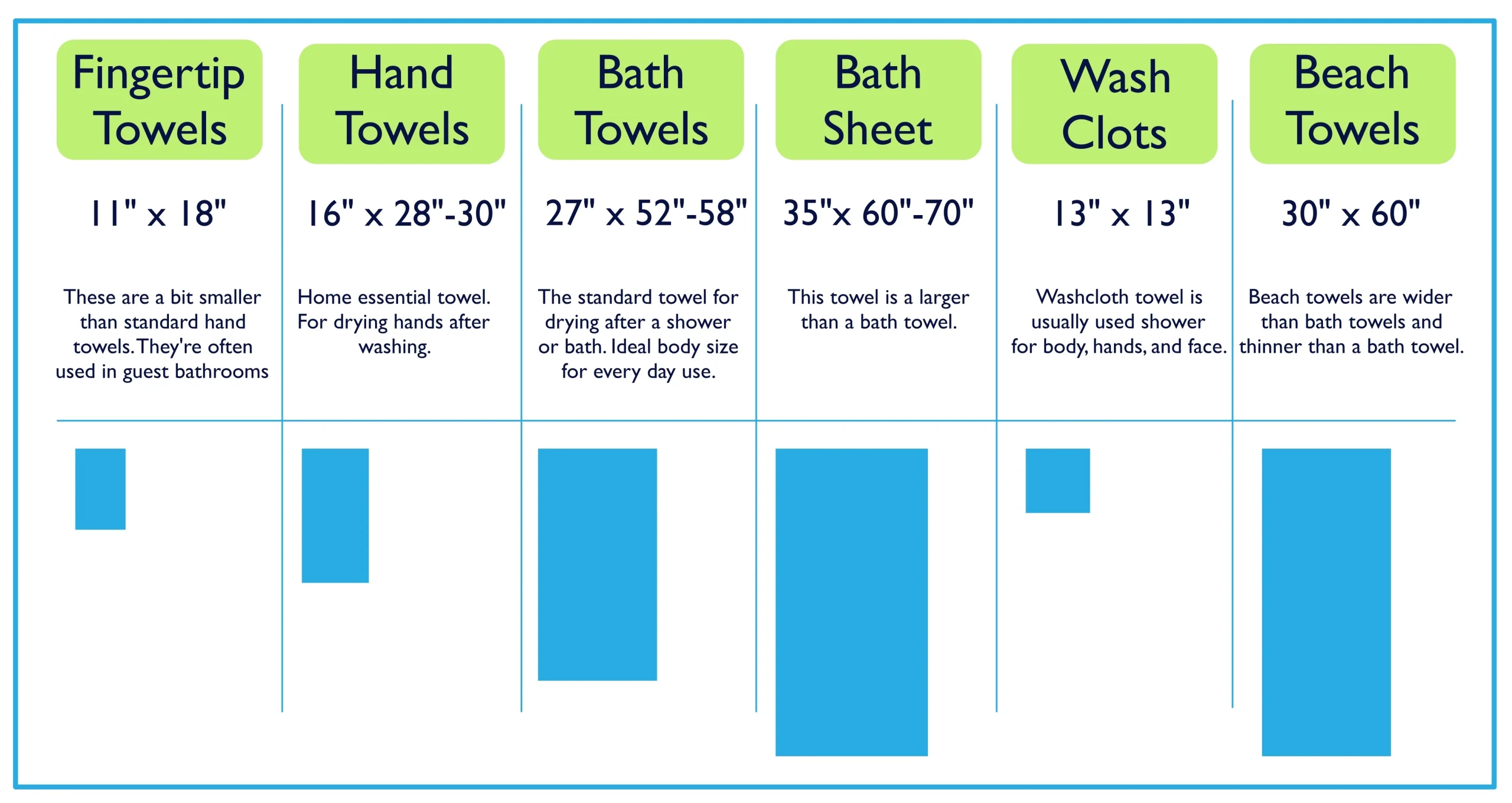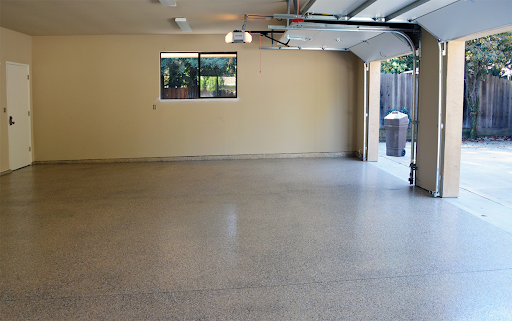Kitchen towels are an indispensable part of any well-equipped kitchen. From drying dishes and wiping countertops to handling hot pots and pans, these versatile textiles play a crucial role in maintaining a clean and efficient cooking space. While often taken for granted, the size of your kitchen towels can significantly impact their functionality and suitability for various tasks. This comprehensive guide explores the different sizes of kitchen towels, their specific uses, and how to choose the perfect towels to meet your individual needs and preferences.
Understanding Kitchen Towel Anatomy: Size, Material & Weave
Before diving into the specifics of towel sizes, let’s establish a basic understanding of the key components that contribute to a kitchen towel’s overall performance:
- Size (Dimensions): The length and width of the towel, usually measured in inches or centimeters. This is the primary focus of this guide.
- Material: The type of fiber used to create the towel fabric, such as cotton, linen, microfiber, or a blend of these materials.
- Weave: The pattern in which the fibers are woven together, which affects the towel’s absorbency, texture, and durability. Common weaves include terry cloth, waffle weave, and flour sack.
- Weight (GSM): Grams per square meter (GSM) is a measure of the towel’s density. Higher GSM towels are generally thicker and more absorbent.
The size of a kitchen towel, in combination with its material and weave, determines its optimal use cases within the kitchen.
Standard Kitchen Towel Sizes: A Dimensional Breakdown
Kitchen towels come in a variety of sizes to accommodate different tasks and preferences. Here’s a breakdown of the most common sizes and their typical applications:
- Dish Towels (Standard Size): These are the workhorses of the kitchen, typically ranging from 16 x 28 inches (40 x 71 cm) to 18 x 30 inches (46 x 76 cm). This size is versatile enough for drying dishes, wiping countertops, and general cleanup. The rectangular shape provides ample surface area for absorption.
- Hand Towels (Smaller Size): Slightly smaller than dish towels, hand towels usually measure around 12 x 18 inches (30 x 46 cm) to 16 x 25 inches (40 x 64 cm). They are ideal for drying hands after washing, especially when placed near the sink. Their smaller size makes them less cumbersome and easier to store.
- Bar Towels (Utility Size): Also known as utility towels, these are smaller, more absorbent towels, often measuring around 12 x 12 inches (30 x 30 cm) to 16 x 19 inches (40 x 48 cm). They are designed for quick cleanups, wiping spills, and drying small items. Their compact size makes them easy to handle and store in tight spaces.
- Flour Sack Towels (Large Size): Traditionally made from loosely woven cotton, flour sack towels are larger and thinner than most other kitchen towels, typically measuring around 28 x 28 inches (71 x 71 cm) to 30 x 30 inches (76 x 76 cm). Their large size and smooth texture make them ideal for tasks like straining liquids, covering dough, and polishing glassware.
- Oversized Kitchen Towels (Extra Large Size): Some manufacturers offer oversized kitchen towels, which can range from 20 x 32 inches (51 x 81 cm) to 24 x 36 inches (61 x 91 cm) or even larger. These are particularly useful for drying large pots and pans, handling bulky items, and tackling major spills.
It’s important to note that these are general size ranges, and actual dimensions can vary slightly depending on the manufacturer and specific product line. Always check the product description or label for precise measurements.
Factors Influencing Kitchen Towel Size Choices:
Several factors influence the size choices made by manufacturers and the preferences of consumers:
- Intended Use: The primary purpose of the towel dictates its ideal size. Dish towels need to be large enough to dry multiple dishes, while hand towels should be compact and convenient for hand drying.
- Absorbency Requirements: Tasks that require high absorbency, like soaking up spills or drying wet surfaces, benefit from larger towels with greater surface area.
- Storage Space: Limited kitchen storage might necessitate smaller towels that can be easily folded and stored in drawers or cabinets.
- Personal Preference: Some individuals prefer larger towels for their versatility, while others find smaller towels more manageable.
- Aesthetic Considerations: The size and shape of kitchen towels can contribute to the overall aesthetic of the kitchen. Some homeowners prefer matching sets of towels in uniform sizes.
- Cost-Effectiveness: Smaller towels are generally less expensive to manufacture, making them a more budget-friendly option.
- Material and Weave: The material and weave of the towel can affect its overall size and performance. For example, a thick terry cloth towel will generally be larger and more absorbent than a thin flour sack towel of the same dimensions.
Matching Kitchen Towel Sizes to Specific Tasks:
To maximize the effectiveness of your kitchen towels, it’s essential to match the size to the specific task at hand:
- Drying Dishes: Opt for standard-sized dish towels (16 x 28 inches to 18 x 30 inches) made from absorbent materials like cotton or linen. Consider having a few dish towels on hand to alternate between drying dishes and wiping countertops.
- Drying Hands: Smaller hand towels (12 x 18 inches to 16 x 25 inches) are ideal for drying hands after washing. Choose soft and absorbent materials that are gentle on the skin.
- Wiping Spills: Bar towels or utility towels (12 x 12 inches to 16 x 19 inches) are perfect for quick cleanups and wiping up spills. Keep a stack of these towels readily available in the kitchen.
- Handling Hot Items: Folded dish towels or oversized kitchen towels can be used to handle hot pots, pans, and baking sheets. Choose thick and heat-resistant materials to protect your hands.
- Covering Dough: Large flour sack towels (28 x 28 inches to 30 x 30 inches) are ideal for covering rising dough, as they are lightweight and breathable.
- Straining Liquids: Flour sack towels can also be used to strain liquids like yogurt or cheese, thanks to their fine weave.
- Polishing Glassware: Flour sack towels are excellent for polishing glassware, as they leave a lint-free shine.
- General Cleaning: Standard-sized dish towels can be used for a variety of general cleaning tasks, such as wiping countertops, cleaning appliances, and dusting surfaces.
Choosing the Right Material for Your Kitchen Towel Size:
The material of a kitchen towel significantly impacts its absorbency, durability, and overall performance. Consider these popular materials:
- Cotton: A classic and versatile choice, cotton is absorbent, durable, and easy to care for. Look for high-quality cotton like Turkish cotton or Egyptian cotton for superior softness and absorbency.
- Linen: Known for its strength, absorbency, and lint-free properties, linen is a great option for drying dishes and glassware. It becomes softer and more absorbent with each wash.
- Microfiber: Synthetic microfiber towels are highly absorbent and quick-drying. They are ideal for cleaning surfaces and wiping up spills.
- Cotton-Linen Blend: Combining the best of both worlds, cotton-linen blends offer a balance of absorbency, durability, and lint-free performance.
- Bamboo: Bamboo towels are naturally absorbent, antibacterial, and eco-friendly. They are a sustainable alternative to cotton.
Tips for Maximizing the Lifespan of Your Kitchen Towels:
To ensure your kitchen towels last for years to come, follow these tips:
- Wash Regularly: Wash kitchen towels frequently to prevent the buildup of bacteria and odors.
- Use Warm Water: Wash towels in warm water with a mild detergent.
- Avoid Fabric Softener: Fabric softener can reduce the absorbency of towels.
- Tumble Dry on Low: Tumble dry towels on low heat or hang them to dry. High heat can damage the fibers.
- Iron if Desired: Ironing linen towels can help maintain their crisp appearance.
- Replace Worn Towels: Replace towels that are worn, stained, or no longer absorbent.
Aesthetic Considerations: Matching Towels to Your Kitchen Decor
Kitchen towels can also serve as a decorative element in your kitchen. Consider the following factors when choosing towels to complement your decor:
- Color: Choose colors that coordinate with your kitchen cabinets, countertops, and appliances.
- Pattern: Select patterns that complement your existing kitchen decor.
- Texture: Consider the texture of the towels and how it will contribute to the overall feel of the kitchen.
- Style: Choose towels that reflect your personal style, whether it’s modern, traditional, rustic, or eclectic.









